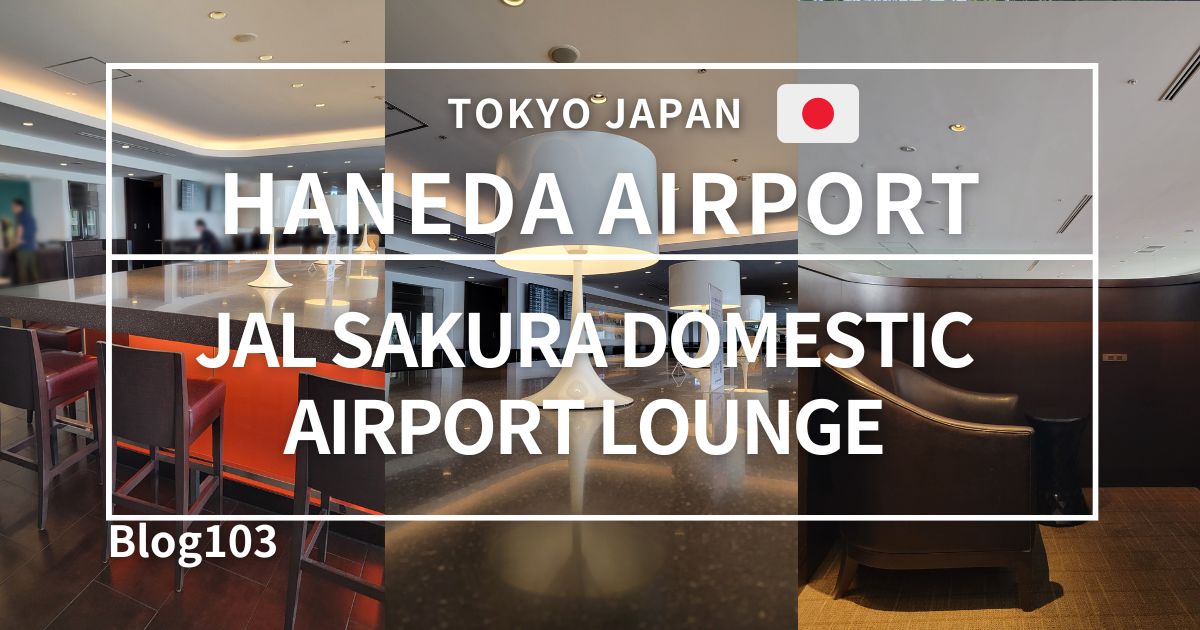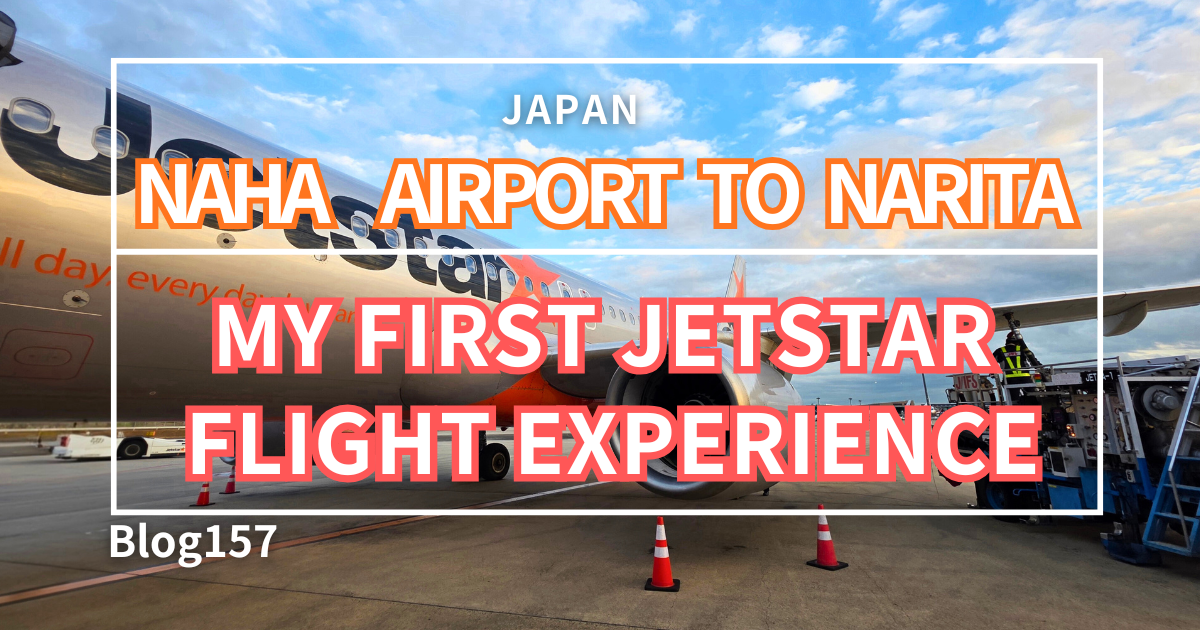Hello everyone! I’m @owncolorstravel a travel and lifestyle blogger based in Okinawa, sharing tips and real experiences to help fellow travel lovers plan their trips.
This time, I flew with Jetstar, one of Japan’s major low-cost carriers, from Okinawa to Narita for the very first time. In this post, I’ll walk you through the process of using Jetstar—along with plenty of details about the flight experience and my honest impressions. If you’re planning to travel to or from Okinawa or Narita Airport, I hope you find this helpful!

About Jetstar
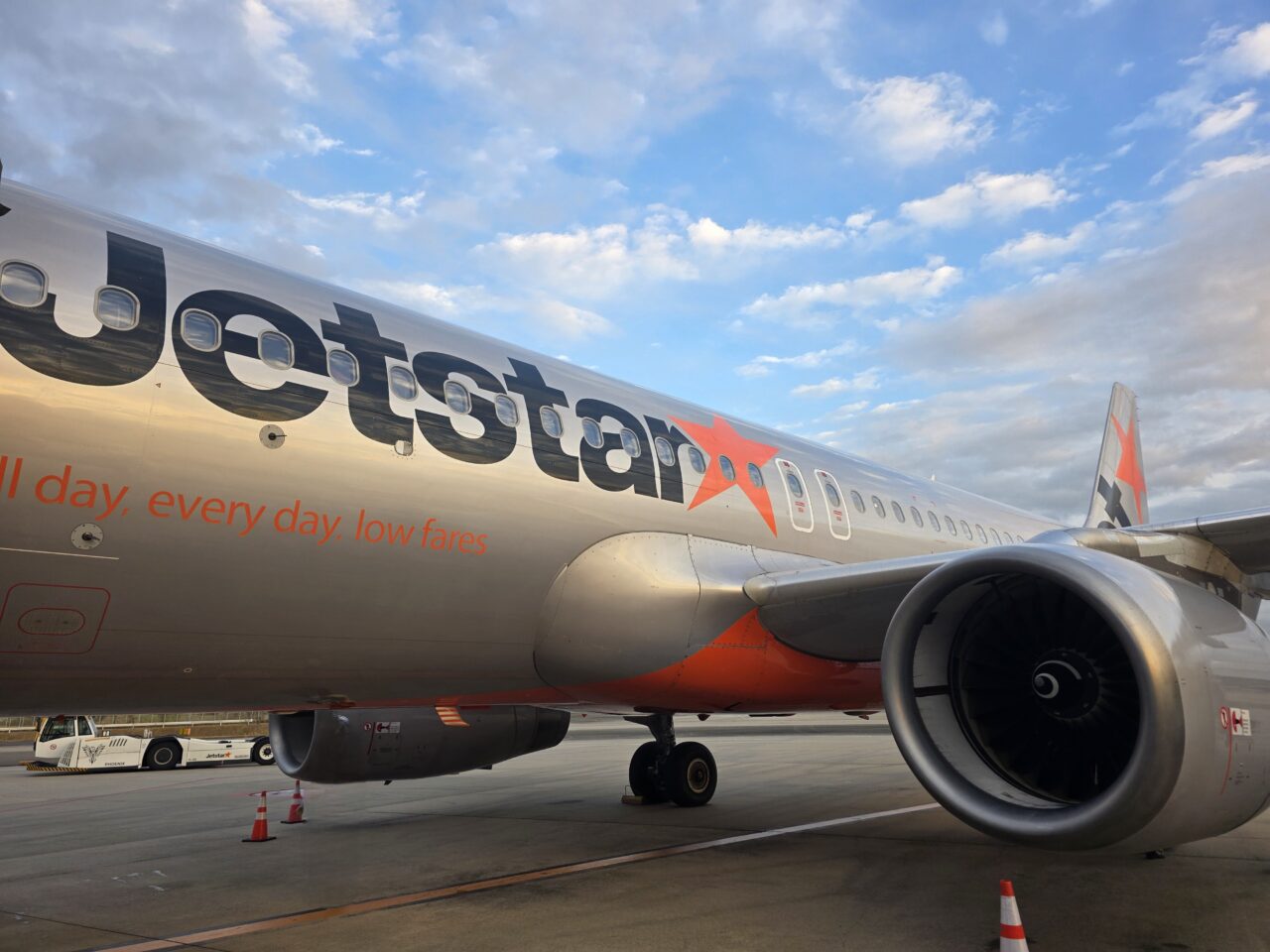
Jetstar is an international low-cost carrier (LCC) operated by the Qantas Group in Australia.
In Japan, the airline operates as Jetstar Japan, a Japanese subsidiary based at Narita International Airport and part of the JAL Group. Jetstar Japan operates both domestic and international routes.
The biggest appeal of Jetstar is its affordable fares and simple, easy-to-understand service structure. Travelers can customize their experience by adding only the options they need, making it a very flexible LCC. And since it’s part of the JAL Group, passengers can also use the JAL Mileage Bank (JMB)—a major perk for budget-conscious travelers who want to keep costs down.
Booking My Jetstar Flight from Okinawa (Naha) to Narita
This was my first time flying Jetstar, as I needed a flight from Naha Airport in Okinawa to Narita Airport for an international connection.
Normally, I’m a JAL loyalist and collect JAL miles. However, JAL flights from Naha only go to Haneda, not Narita. So if you insist on flying JAL, you’d need to travel from Haneda to Narita by train or airport limousine bus to catch your international flight.
That’s why I decided to fly Jetstar this time.
As a side note, JAL miles can be redeemed for Jetstar Japan award tickets starting at 4,500 miles one way.
However, I wasn’t sure whether I could add checked baggage to an award ticket in advance, so for this trip I booked my Jetstar ticket separately from my international ticket.

I purchased 25 kg of checked baggage ahead of time. My luggage weighed 22 kg when returning from overseas, so it turned out to be the right choice.
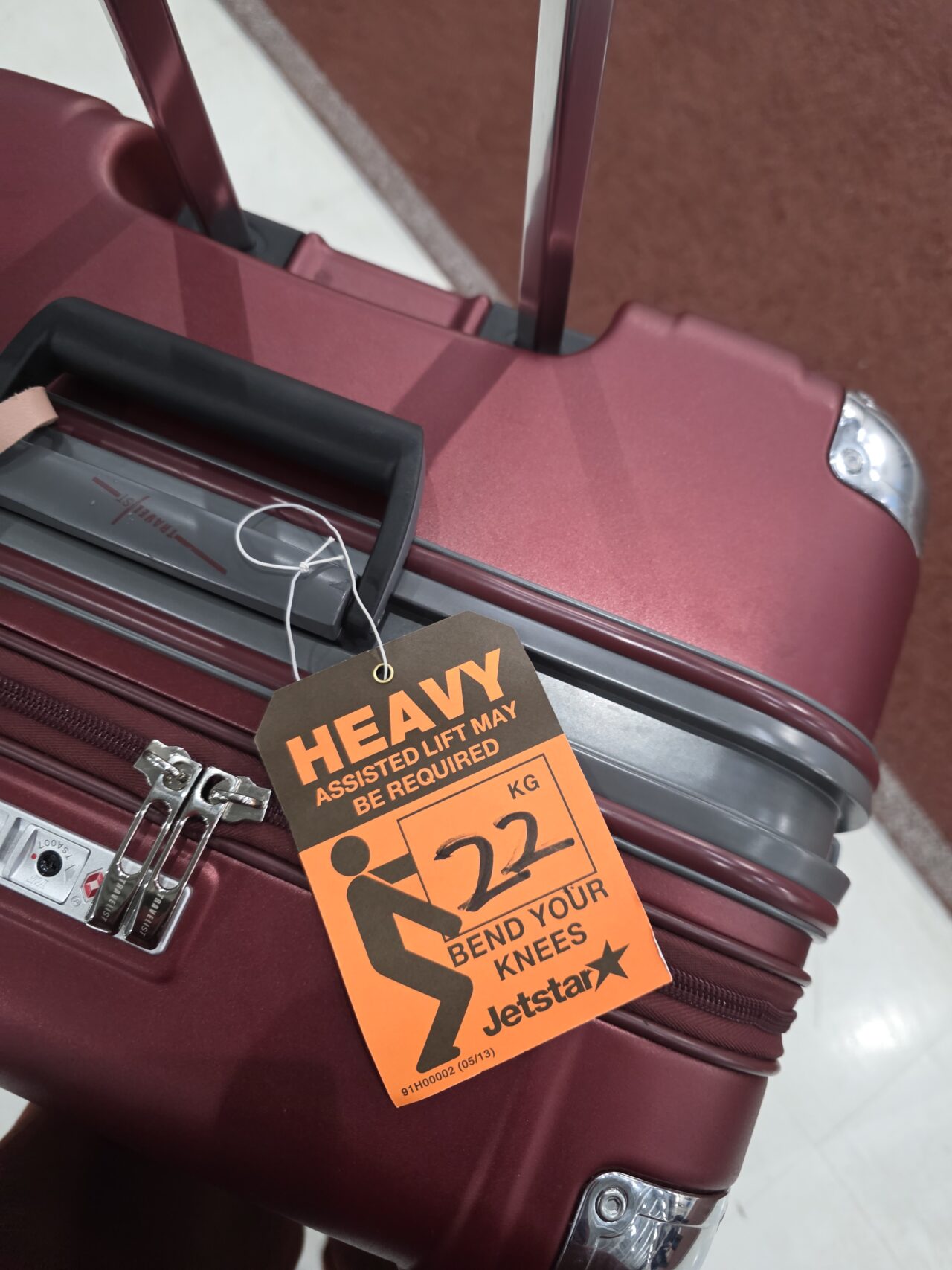
Choosing the Fare Type
Jetstar offers several different fare types, each with different prices and included services. I chose the Economy Starter Flex Plus fare for this trip.
Here’s what it includes:
- Carry-on baggage allowance: 7 kg.
- Checked baggage: 20 kg per passenger is included, but I purchased an extra 25 kg as an add-on.
- Seat selection for Standard, Upfront, or Extra Legroom seats is included.
You can choose any seat you like—window, aisle, etc.
I selected 1A, the front-row Extra Legroom seat, for the extra space. - A meal, drink/snack, or an in-flight voucher is included.
- Free changes to the date/time of your flight until the change deadline.
A fare difference may apply, but since I had an international flight afterward, I chose this option for flexibility in case something happened. - Same-day flight changes at no additional cost.
Again, this was reassuring, especially for my return flight from overseas.
Although the total cost is higher, this fare type offers much more flexibility—cancellations, route changes, name changes, earning JAL miles, and more—so I feel it was the right choice for this trip.
If this had been a simple domestic trip, I probably would have chosen one of Jetstar’s basic bundles instead:
- MINI (14 kg carry-on only), or
- MORE (7 kg carry-on + 20 kg checked baggage)
Flight Experience: Naha to Narita + Comparing the Return Flight
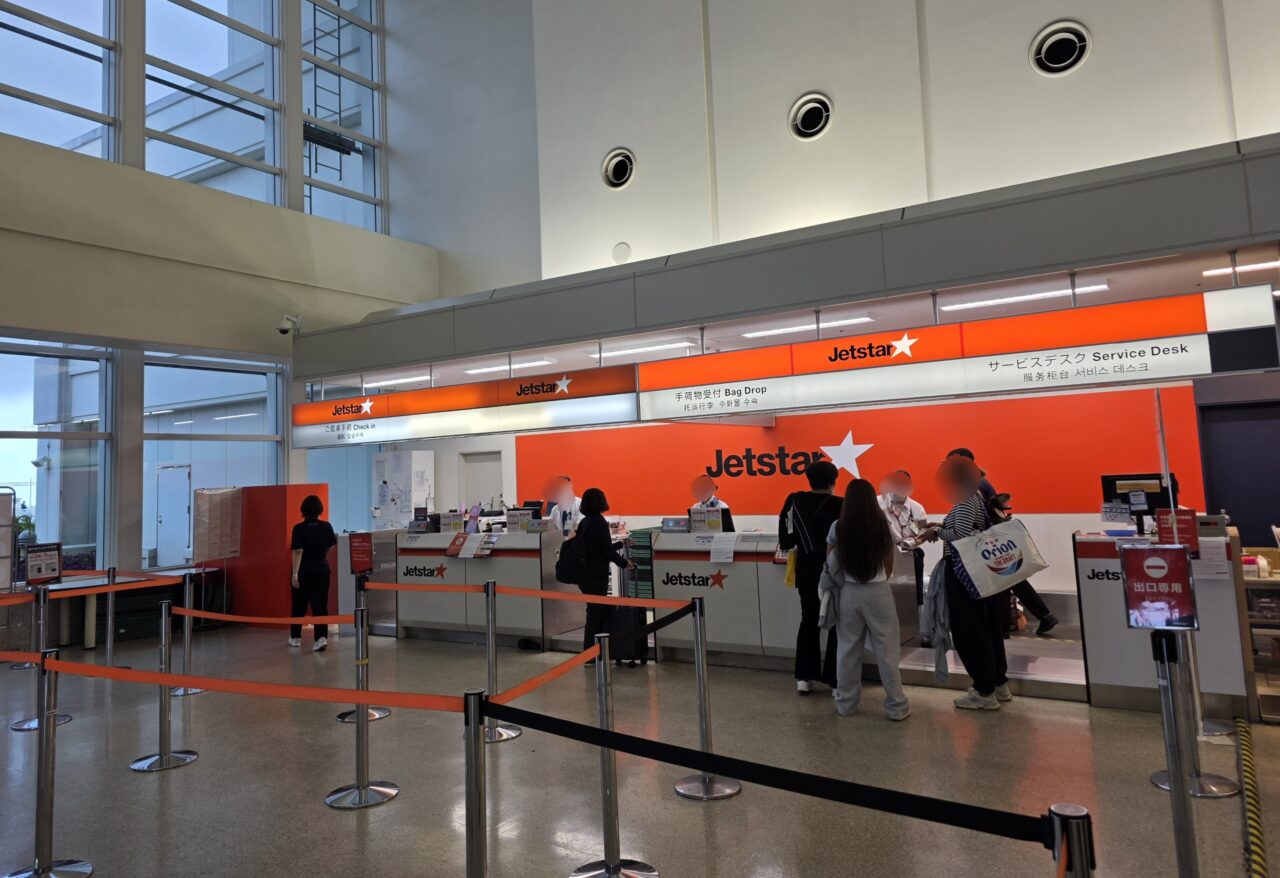
The Jetstar Japan check-in counter at Naha Airport is located on the 3rd floor in the departure lobby, right next to the JAL counters. That’s where I dropped off my checked baggage.
At Narita Airport, things were even smoother thanks to the self-service kiosks. I simply scanned my QR code, checked my luggage, and printed my boarding pass without waiting in line.
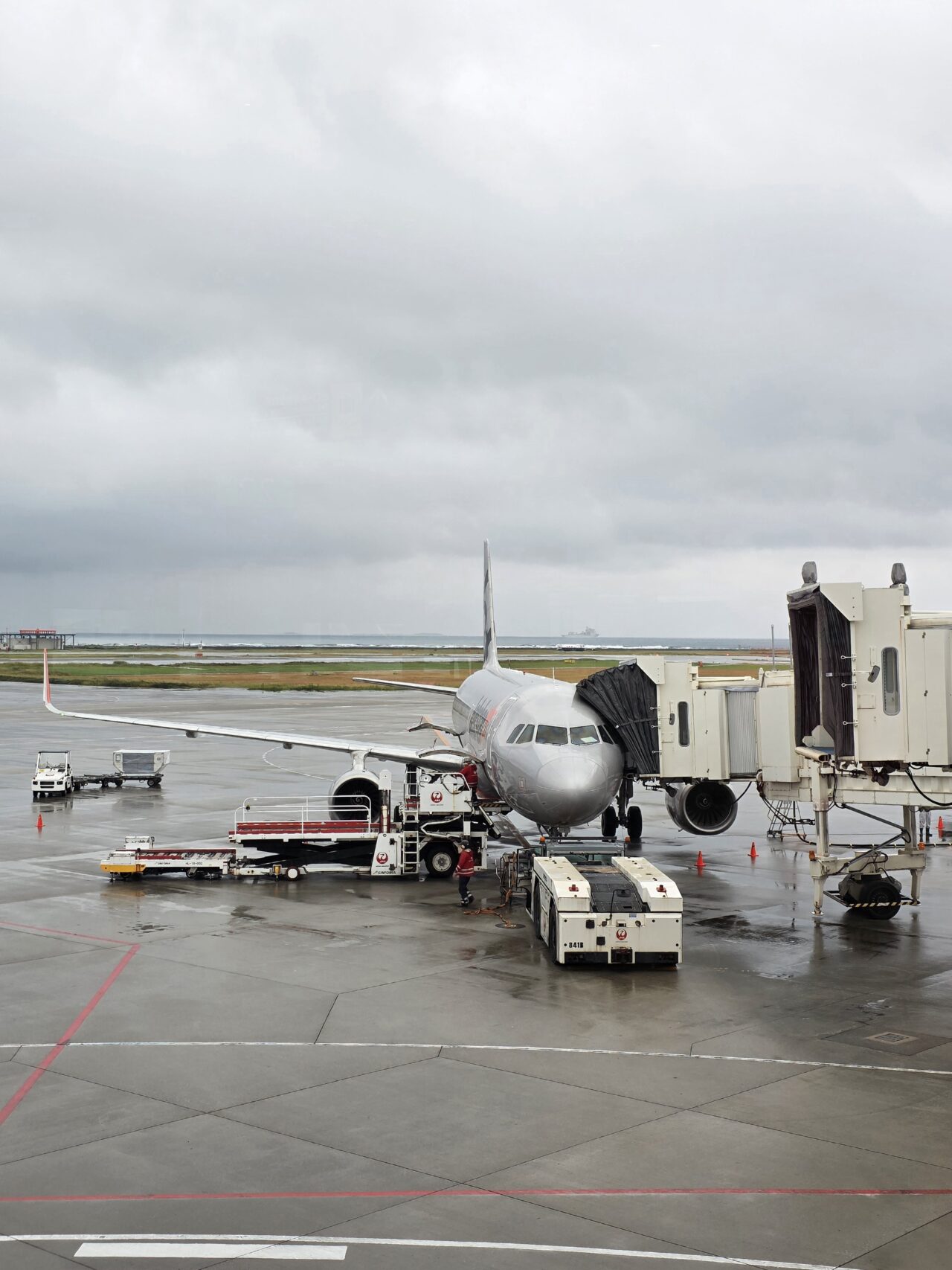
The weather wasn’t great, but it was time to board. I also noticed that Naha Airport’s gate area now has a Pork Tamago Onigiri vending machine—a fun new addition!
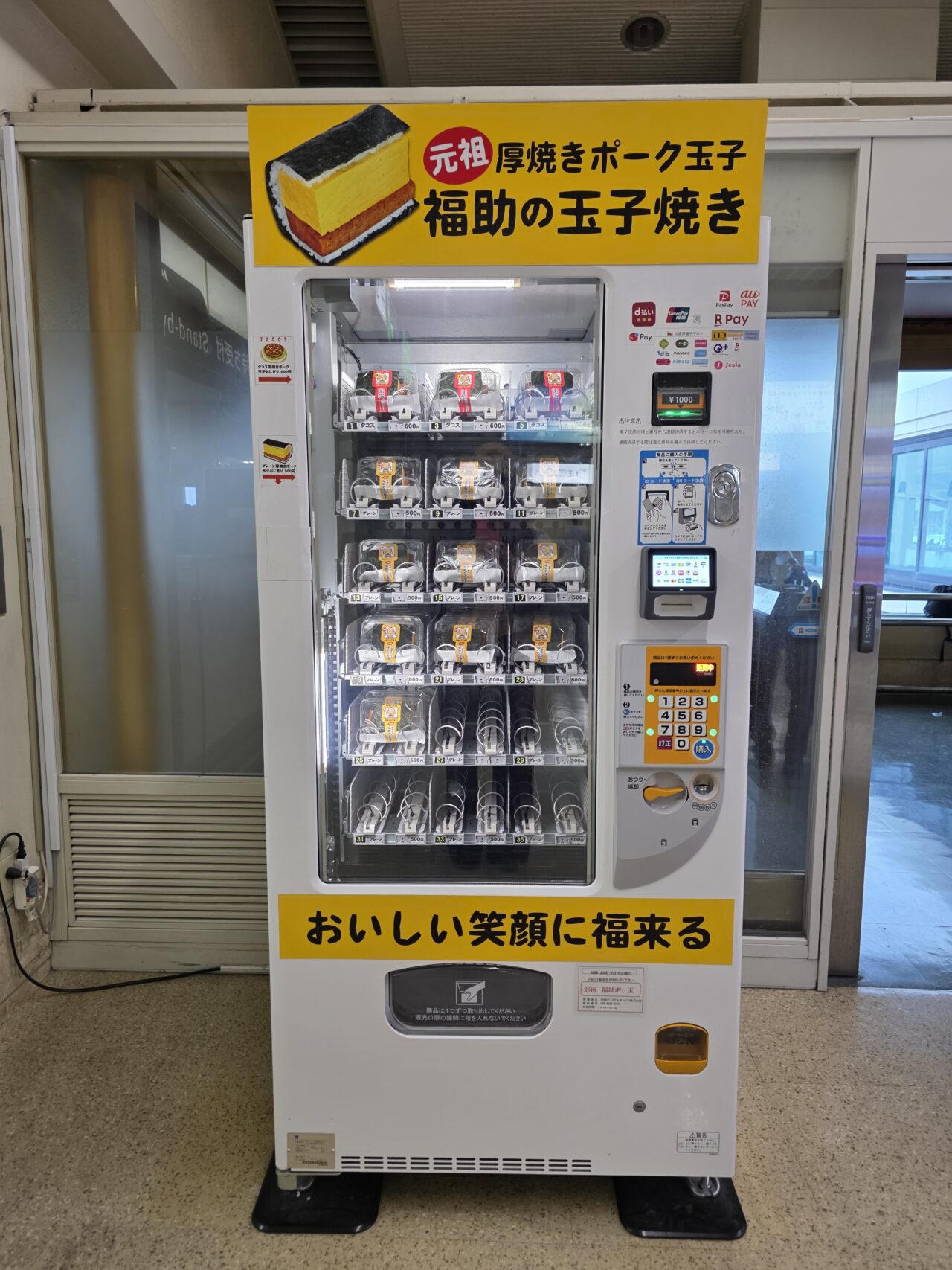
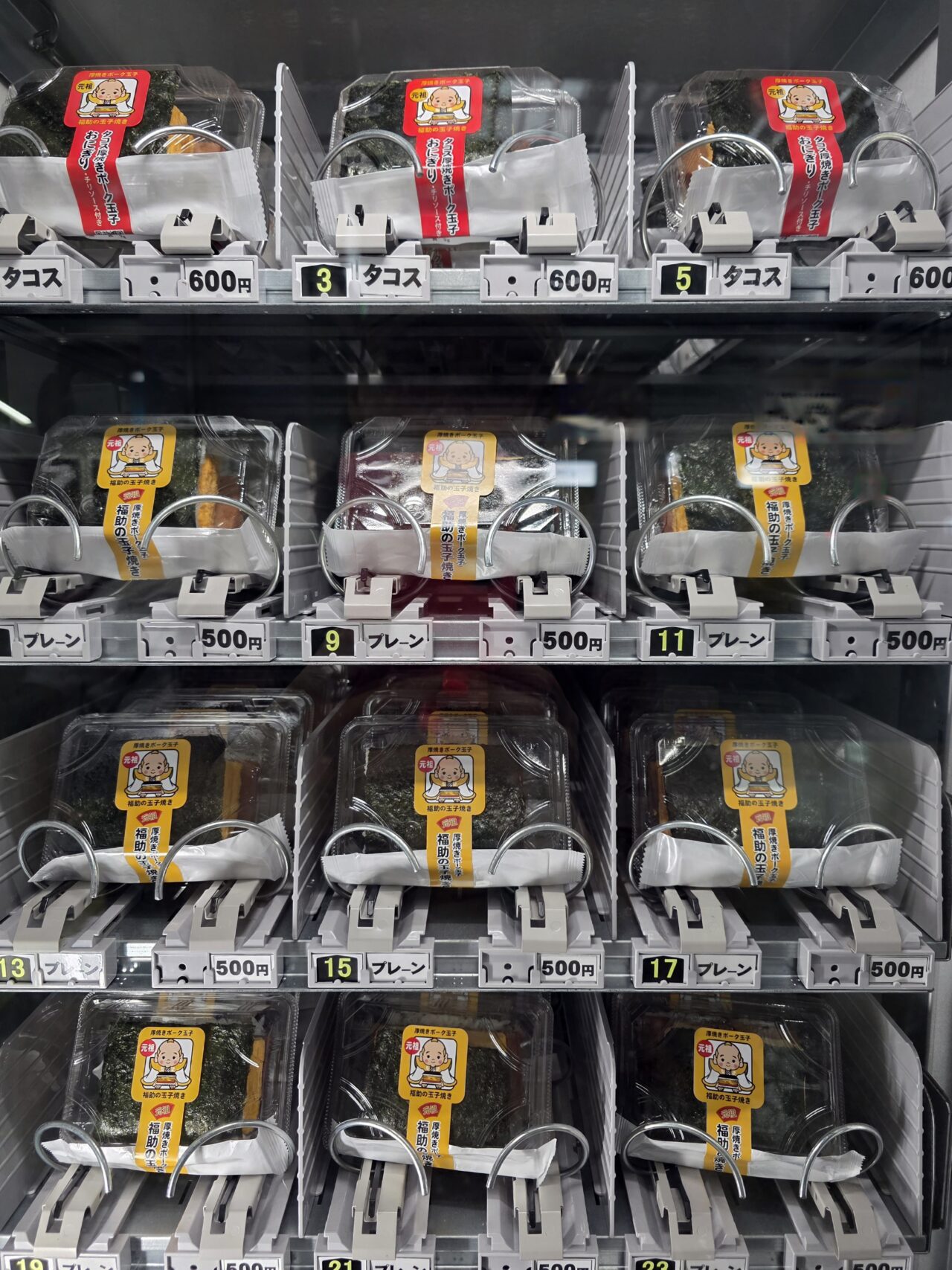
On board, the aircraft has a 3–3 seat configuration. I booked seat 1A, the front-row window seat with extra legroom. The space is great, but just like with JAL and other airlines, front-row passengers must store all bags in the overhead bins since there’s no storage at your feet.
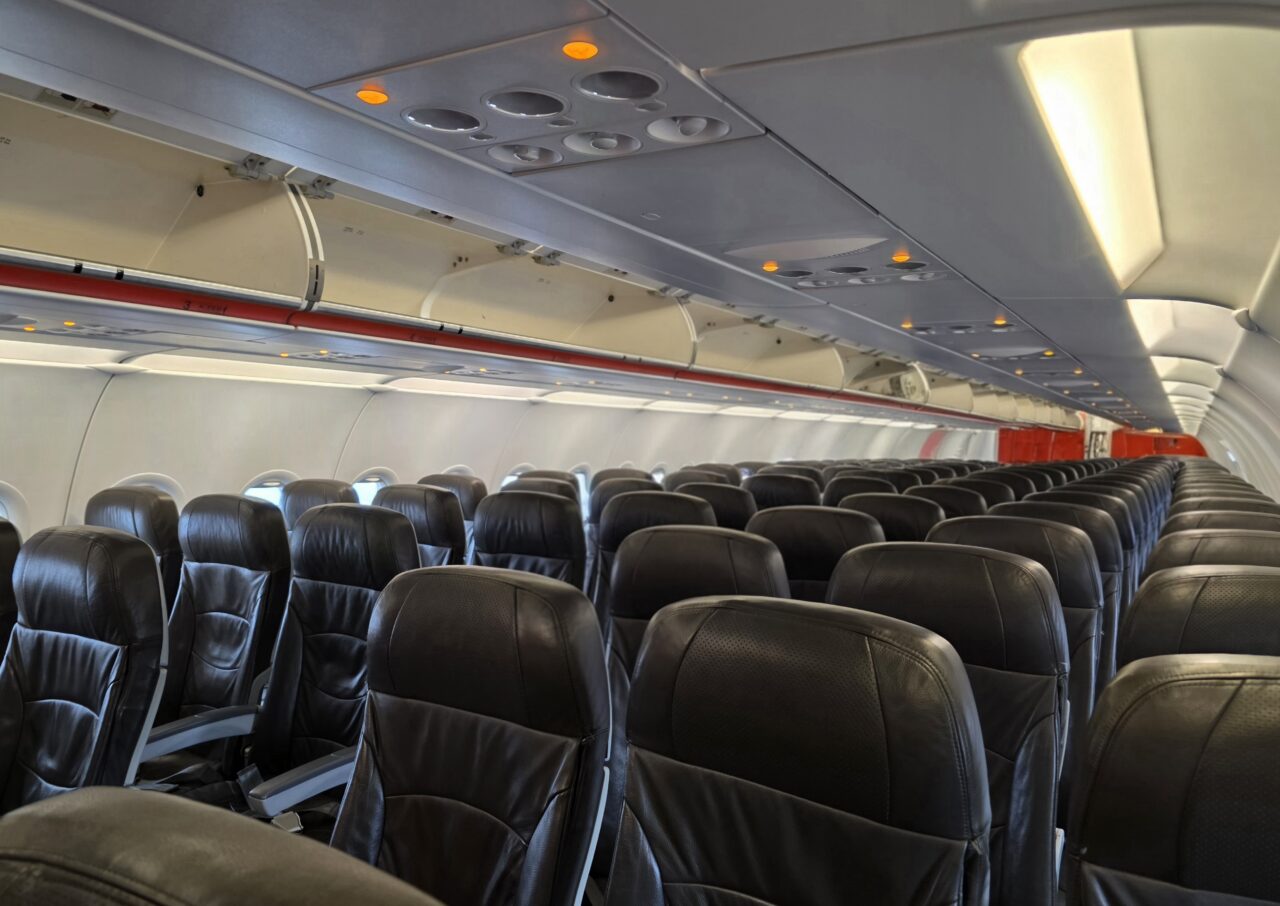
While the legroom was excellent, the restroom is right in front of the first-row seats, so there’s a lot of foot traffic. Plus, cabin crew are seated directly across from 1A, which can feel a little awkward. If you want to avoid eye contact, the seats on the opposite side—1D, 1E, 1F—are a better choice.
The aircraft didn’t have power outlets or USB ports, so keep your portable charger with you. You can’t store power banks in the overhead bin, so place them in your pocket or in the seat-back pocket.

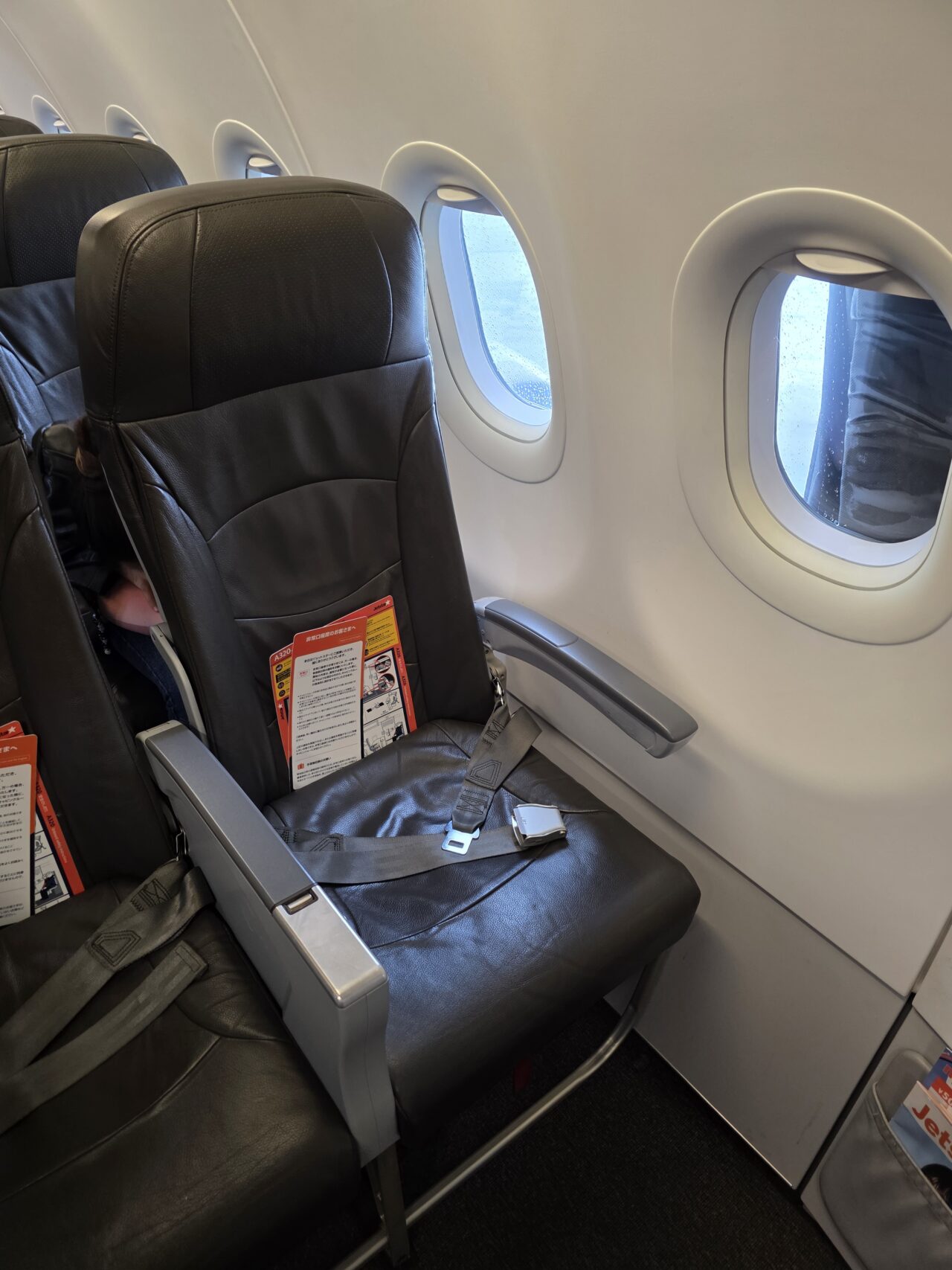
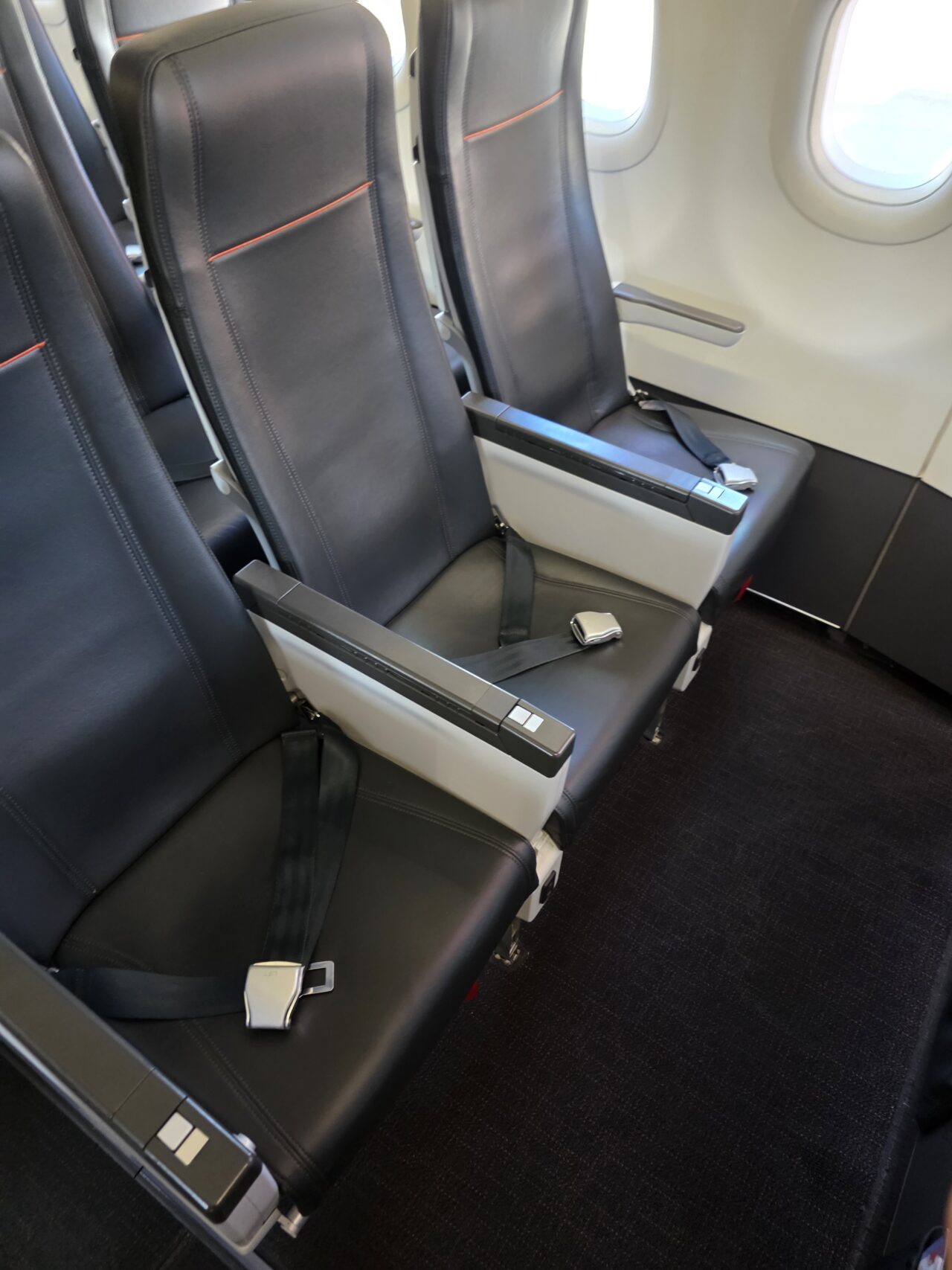
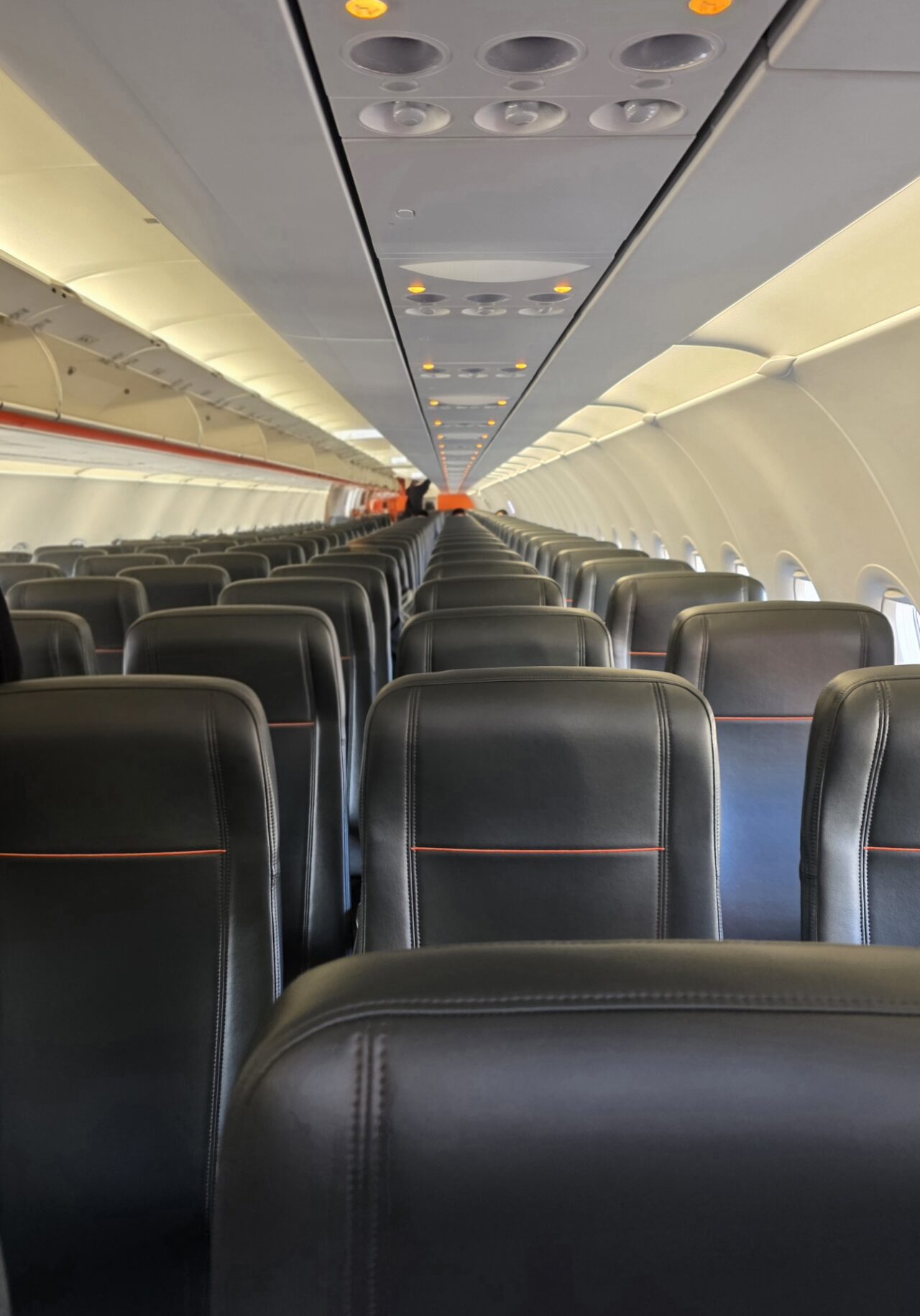

On the return flight from Narita to Naha, I also chose seat 1A, but this time there was a partition in front of me instead of crew seats. It felt more private and much more comfortable, so it really depends on the aircraft type. The legroom was just as spacious.
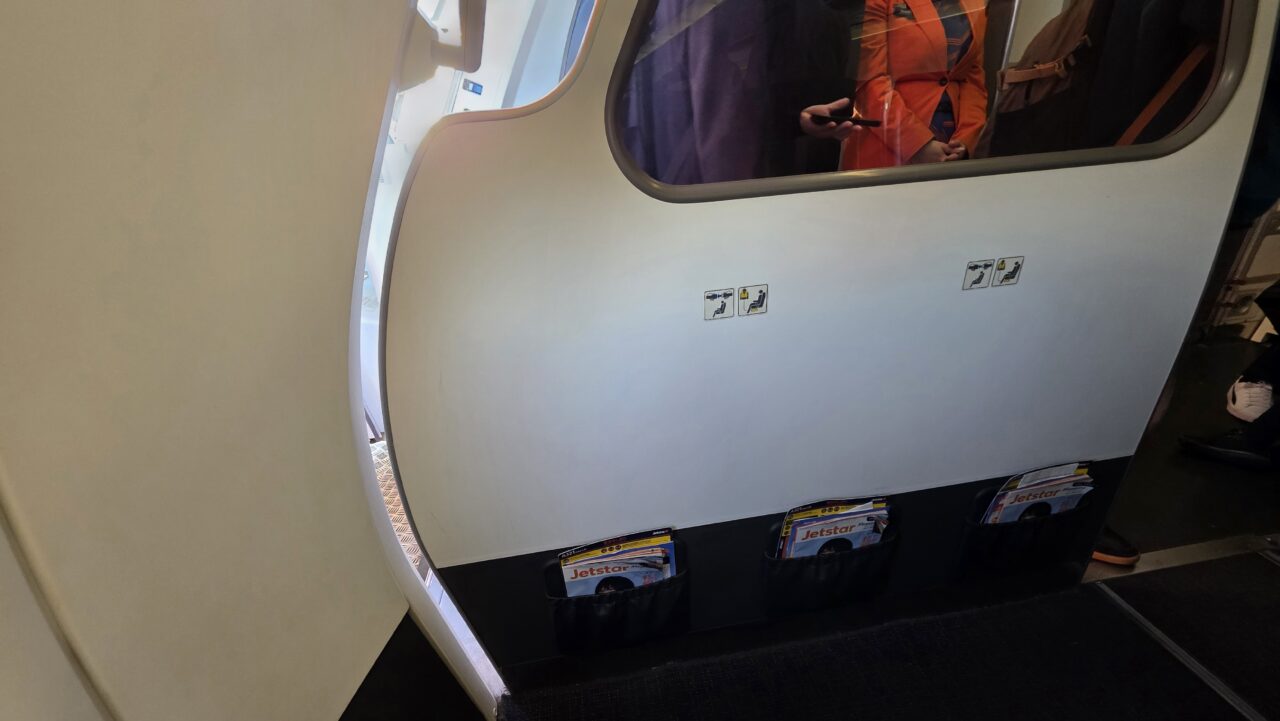
A tall international traveler seated in the middle section looked a bit cramped, though. For domestic flights—which are relatively short—the standard seats are fine if you’re not picky. But for medium- to long-haul flights, extra legroom makes a big difference in how tired you feel.
A neck pillow is a great item to bring if you want to avoid straining your neck. And even if you’re wearing something cozy like sweats, the cabin gets chilly after takeoff, so leggings or an extra layer is recommended if you get cold easily.
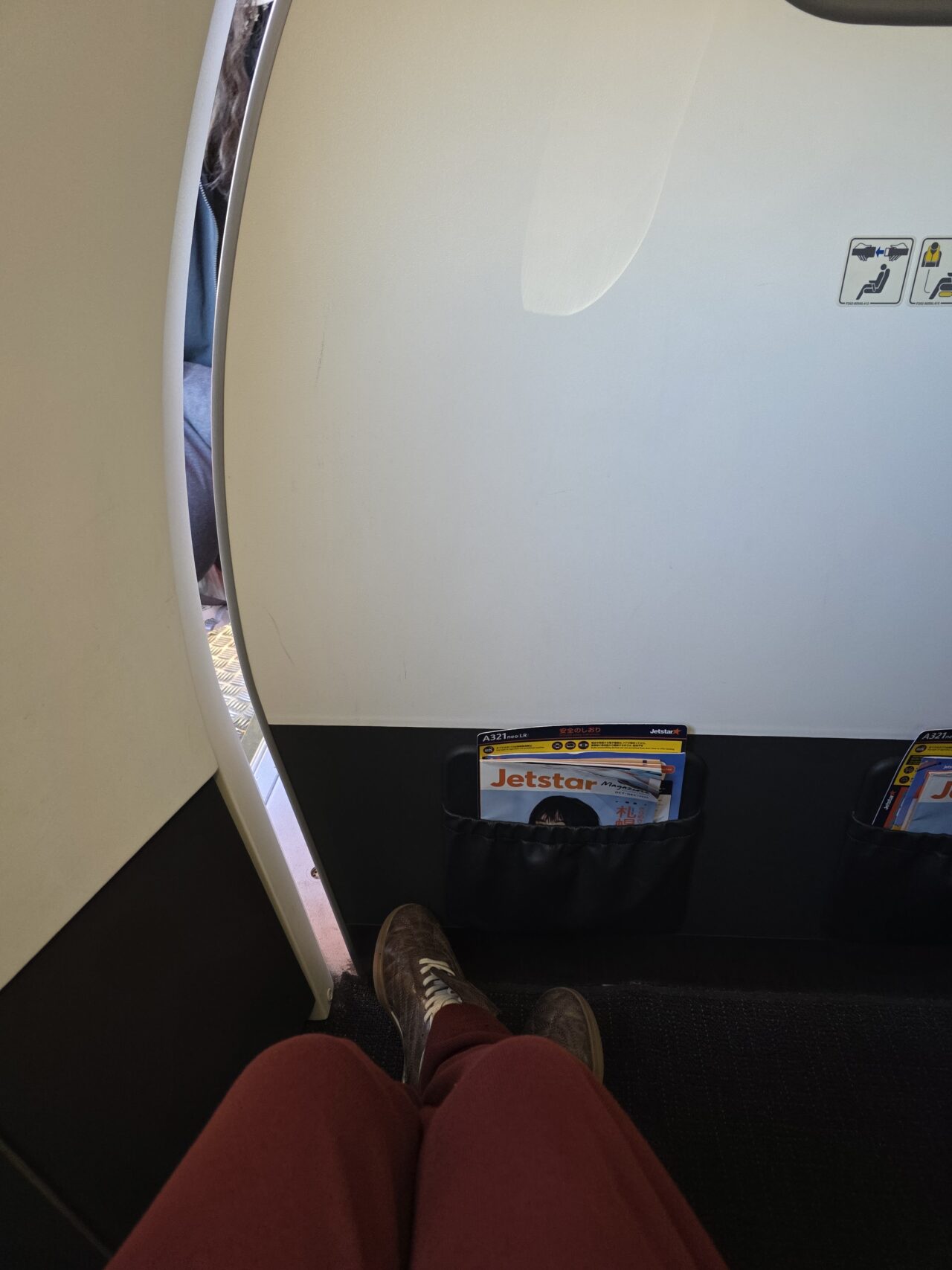
With the Flex Plus fare, I received a ¥500 in-flight voucher.
On the outbound flight, I got a baumkuchen cake and coffee, and on the return I chose Pringles and onion soup.
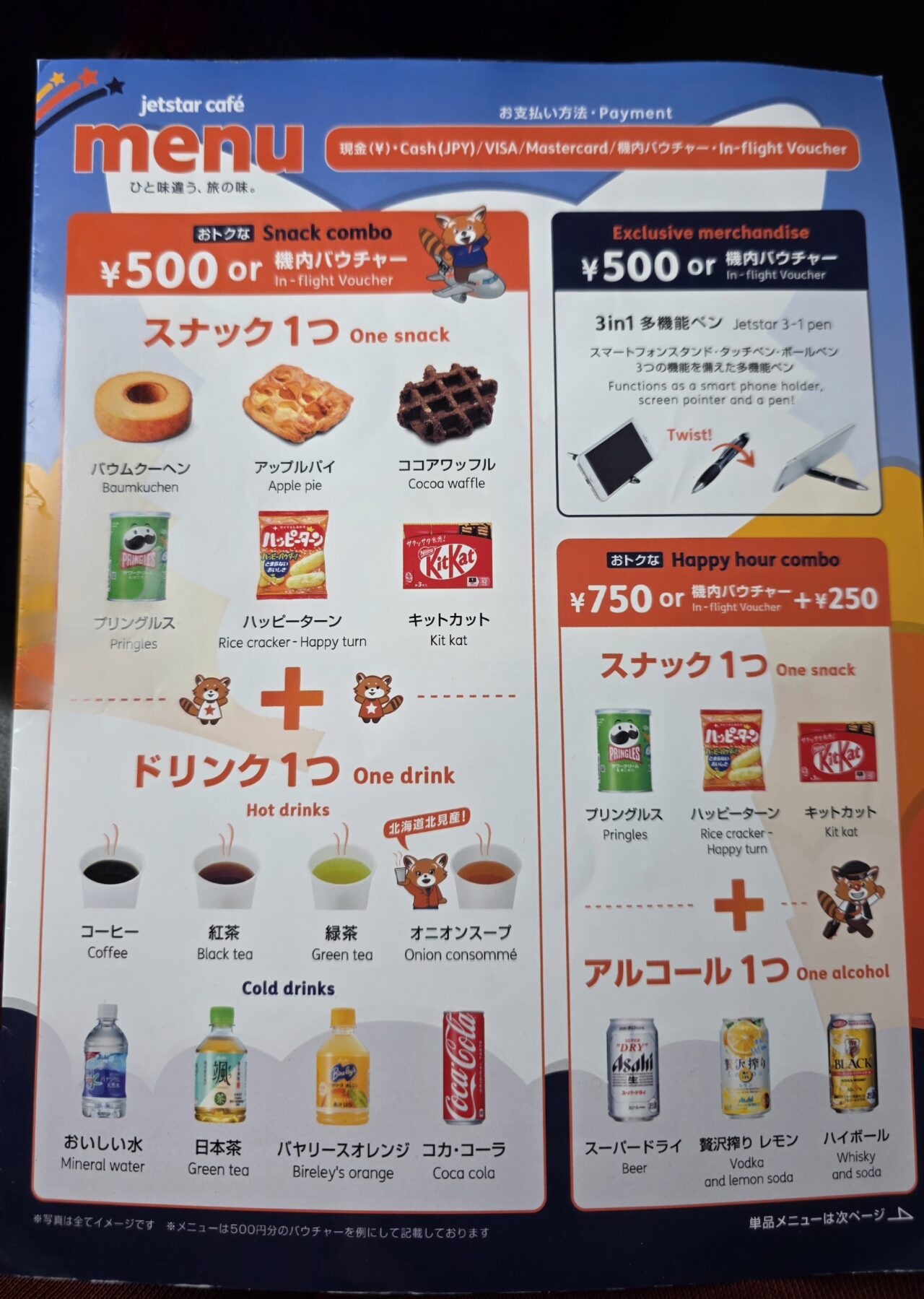

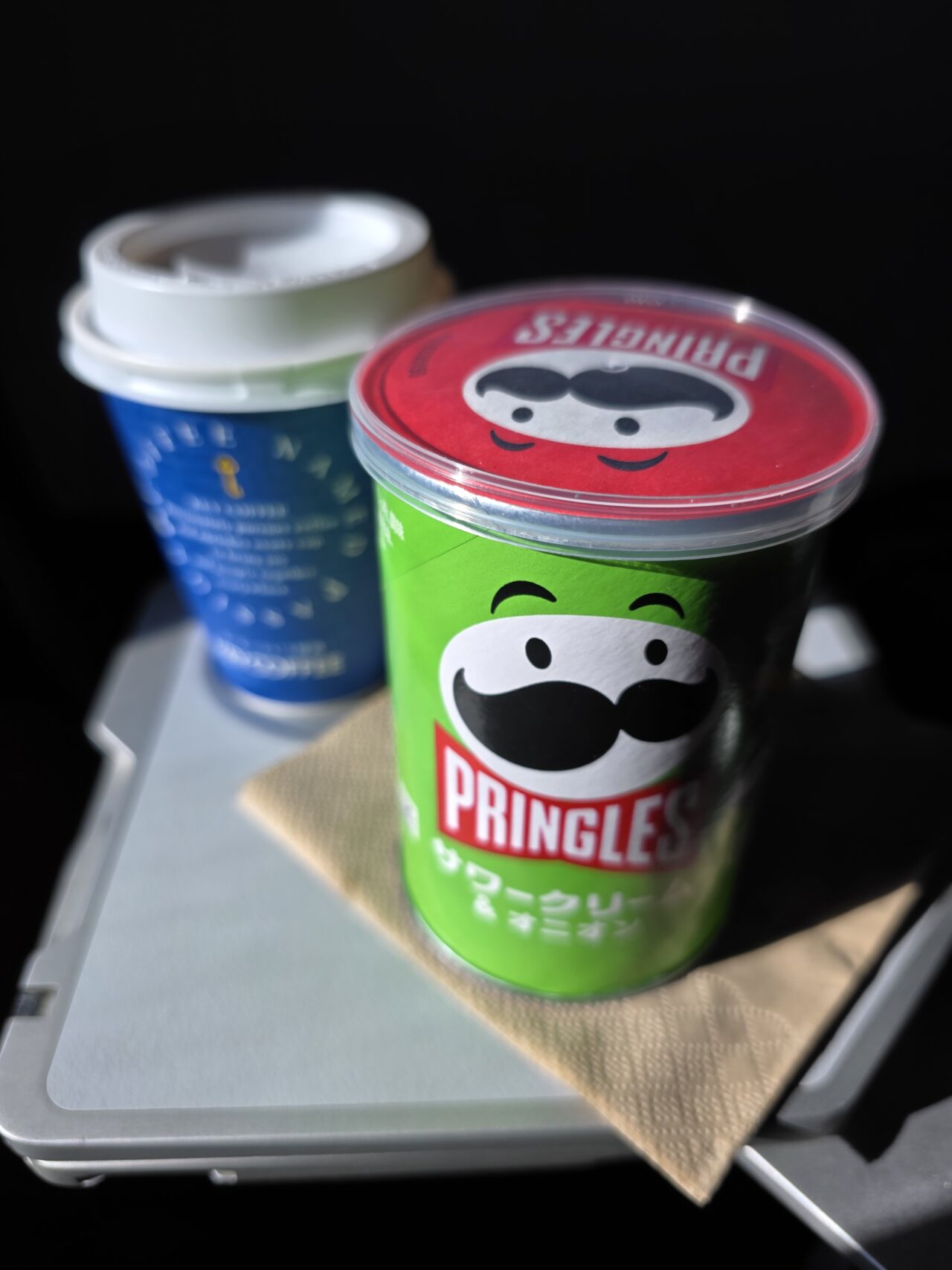

Approaching Narita, the skies finally cleared. The flight from Naha to Narita usually takes 2.5 to 3.5 hours, and the timing was quite different between the outbound and return flights.

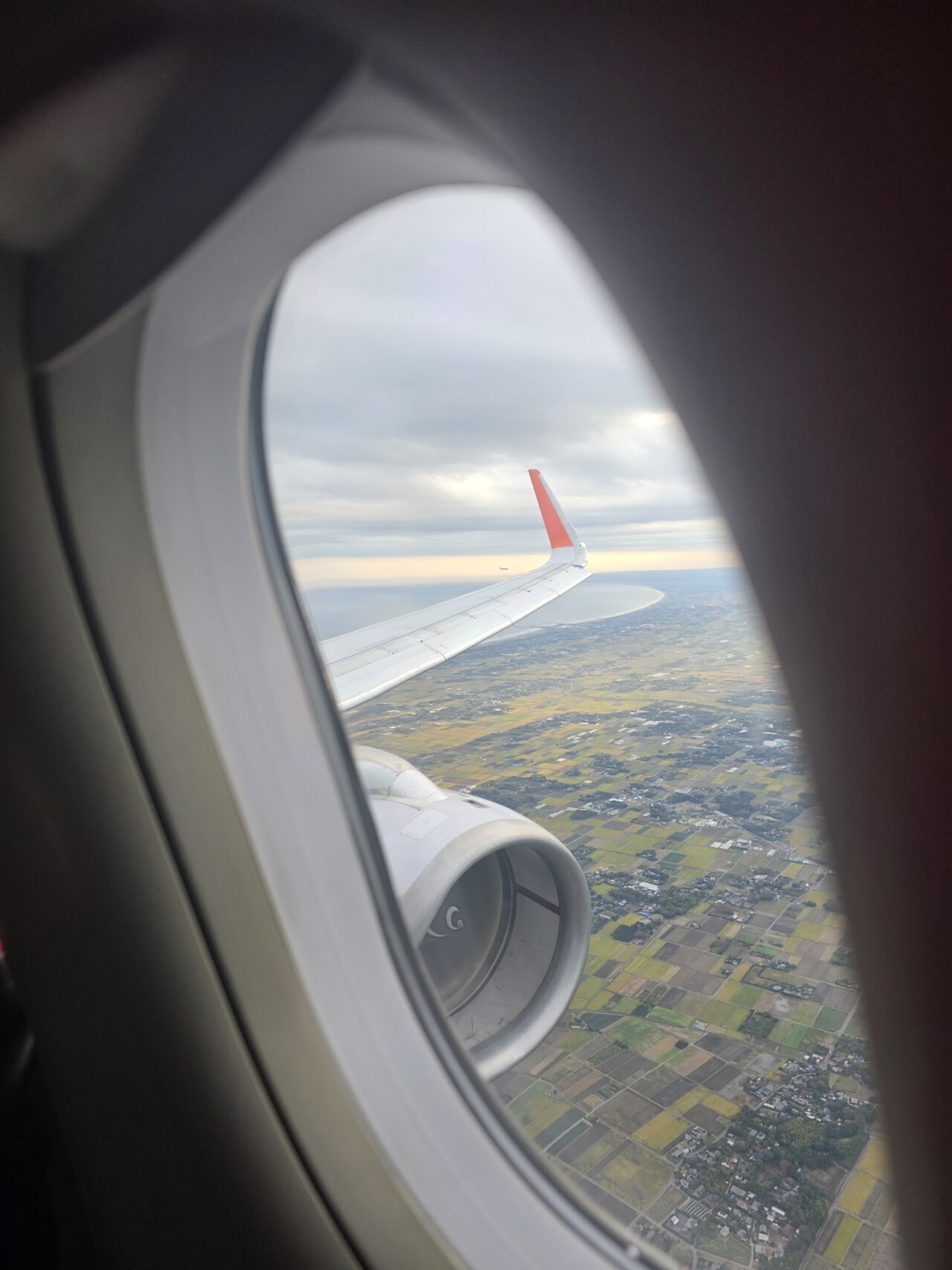
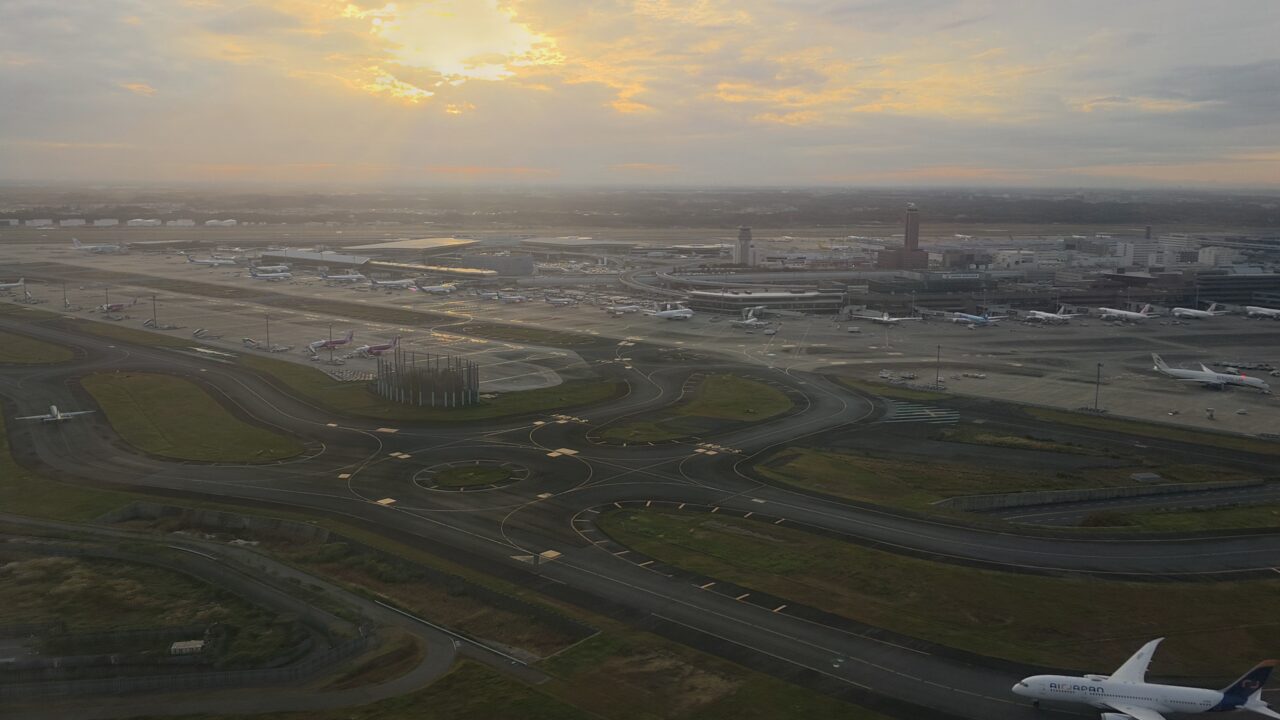
Since the outbound flight was delayed, I was glad I had booked a hotel near Narita the night before my international flight.
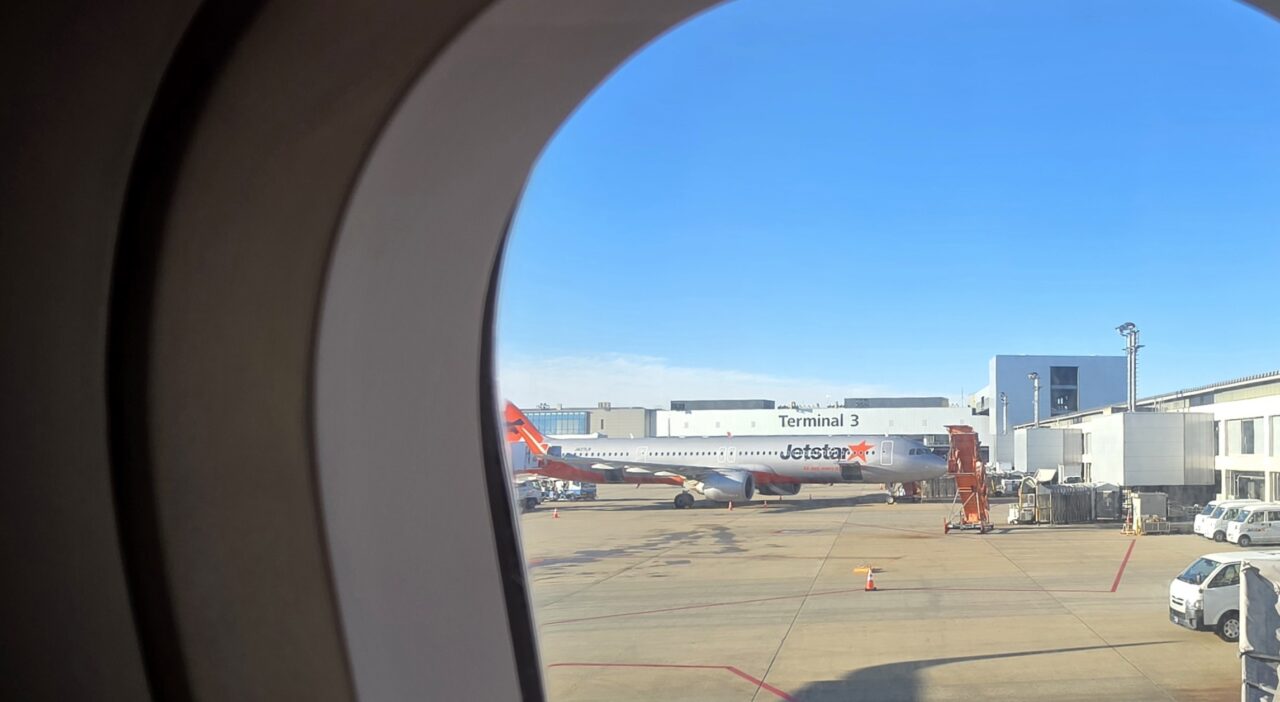
The Jetstar aircraft looked great against the bright blue sky at Narita—the orange star logo really pops.
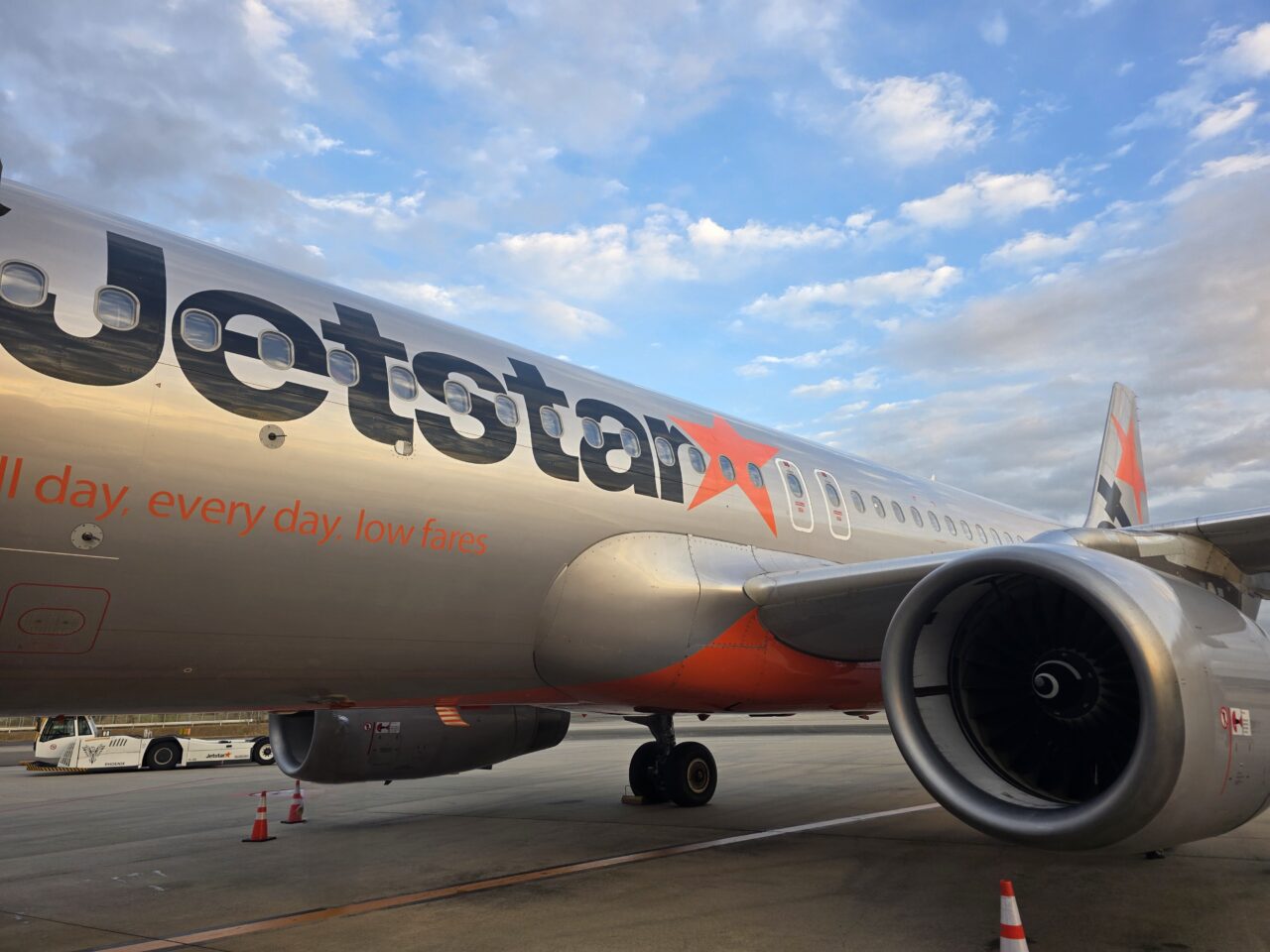
Overall, Jetstar is a great choice for budget travel. This was my first time flying with them, and with the optional add-ons and flexible fare choices, I really felt the value for the price.
If you’re flying JAL through Haneda or looking for tips on choosing the best suitcase for travel, feel free to check out my previous posts!
